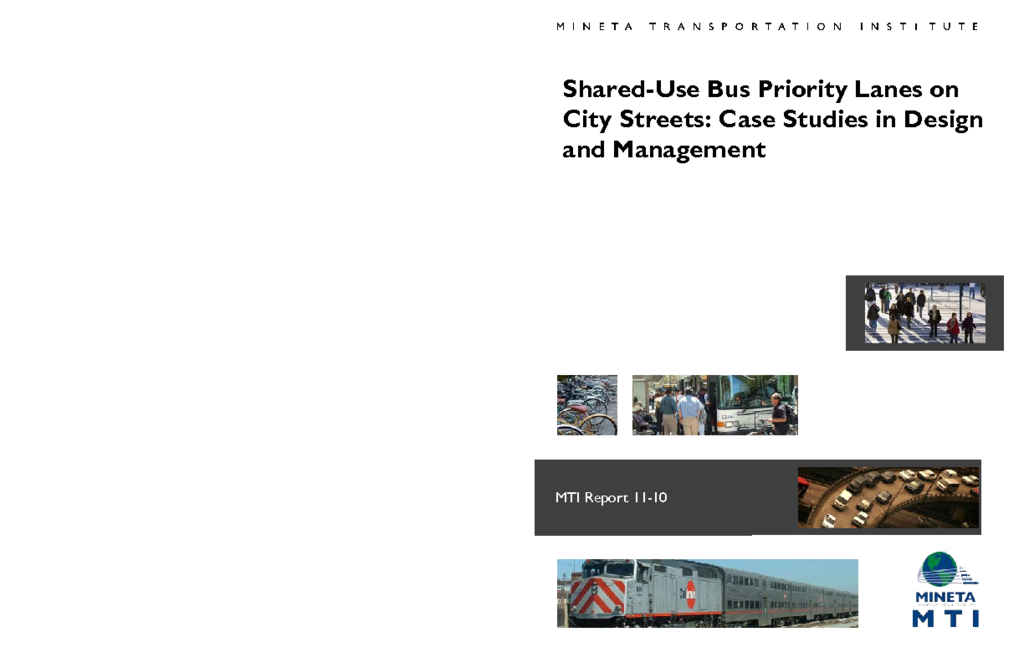This report examines the policies and strategies governing the design and, especially, operations of bus lanes in major congested urban centers. It focuses on bus lanes that operate in mixed traffic conditions; the study does not examine practices concerning bus priority lanes on urban highways or freeways. Four key questions addressed in the paper are:
- How do the many public agencies within any city region that share authority over different aspects of the bus lanes coordinate their work in designing, operating, and enforcing the lanes?
- What is the physical design of the lanes?
- What is the scope of the priority use granted to buses? When is bus priority in effect, and what other users may share the lanes during these times?
- How are the lanes enforced?
To answer these questions, the study developed detailed cases on the bus lane development and management strategies in seven cities that currently have shared-use bus priority lanes: Los Angeles, London, New York City, Paris, San Francisco, Seoul, and Sydney. Through the case studies, the paper examines the range of practices in use, thus providing planners and decision makers with an awareness of the wide variety of design and operational options available to them. In addition, the report highlights innovative practices that contribute to bus lanes’ success, where the research findings make this possible, such as mechanisms for integrating or jointly managing bus lane planning and operations across agencies.




